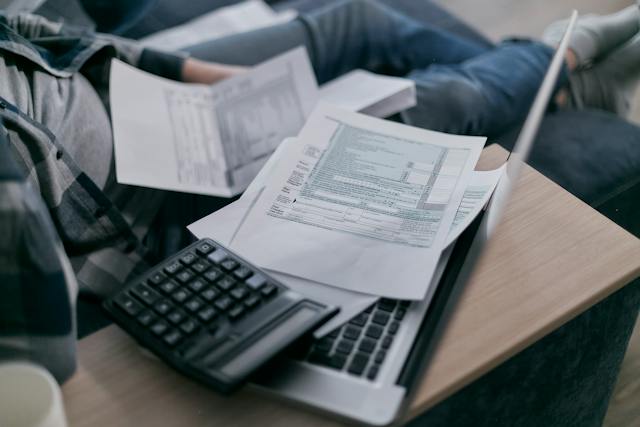.png)
Cash Flow is king when it comes to rental investments. But more importantly, you want to make sure your rental property generates a positive cash flow.
Here is everything you need to know when it comes to calculating the ROI of a rental property.
ROI for Long-Term Leases
A long-term lease usually runs for an extended period, usually between several months to multiple years. Over this period, tenants pay regular rent to continue occupying their apartments, residential homes, or even commercial buildings.
As a landlord, this helps guarantee a consistent rental income for the entire duration of the lease. You also get to enjoy the potential for property value appreciation.
For such properties, the ideal rate of return is usually between 8- and 12 percent per year. The exact ROI will, however, depend on multiple factors, such as property location, prevailing market conditions, and management efficiency.
When investing in a long-term lease, you should consider several factors for optimal ROI yield. Such as, tax implications, real estate market trends, and operating expenses.
ROI for Short-Term Rentals
These are rental properties that landlords rent for short durations. A good example is a short-term- or vacation rental. These are usually listed on platforms such as VRBO and Airbnb.
.jpg)
For these types of rentals, landlords should expect an ROI of about 10 percent. The only drawback with this kind of investment is that incomes may not always be consistent. During off-peak seasons, they can dip to as low as 5%. Peak seasons can see ROIs of up to 20%.
How to Calculate the ROI on A Property Investment
1. ROI
This is a simple calculation that factors only two things. That is, the annual rental income and the cost of investment.
Suppose, for instance, your total cost of investment in the property is $120,000. Let’s also assume that during the same year, you made $140,000 in profits (rental income minus rental expenses).
To calculate the property’s ROI, you’ll need to subtract the cost of investment from the annual rental income. Then, divide the value you get by the cost of investment multiplied by 100.
ROI = ($140,000 - $120,000)/$120,000 = 16.7%.
That said, this calculation is fairly simple and fails to account for other important things that can significantly impact the ROI of an investment. For more granular calculations, use cap rate or cash-on-cash return to calculate the expected ROI of your investment.
2. Cap Rate
Also known as capitalization rate, cap rate is a common calculation used by property investors. It cannot only help you calculate a rental’s profitability, but also help you compare different investment opportunities.

Ideally, cap rate calculations are suitable for commercial properties. It analyzes the ratio between the net operating income (NOI) of a property versus the cost of purchase.
To calculate the NOI, you’ll need to subtract the operating expenses from the rental income.
Next, you’ll need to divide that value by the cost of purchasing the property and then multiply by 100 to get the percentage ROI.
Say, for instance, you bought the investment property for $180,000. You also used $15,000 on closing and remodeling costs. This means that, in total, you used $195,000 to purchase the investment property.
Let’s also assume that you expect a rental income of $1,200 every month from tenants. For an entire year in consistent rental income, this will net you $14,400. Assuming you spend $2,000 in running costs for that year, this would leave your annual income at $12,400.
To calculate the ROI, divide the NOI by the cost of purchasing the property then multiply by 100. (Cap Rate = $12,400/$195,000 X 100 = 6.3%. This will be the ROI on the investment property for that year.
3. Cash on Cash Return
This is another formula you can use to calculate the expected ROI on an investment property. Ideally, it is suitable for use where a mortgage is used to finance the purchase of a rental investment.

Cash on Cash Return (CoC) looks at the ratio of the Net Operating Income (NOI) of a property versus the total cash investment.
Let’s assume that you bought a rental property worth $250,000. And you had to put down 25% ($62,500) as a deposit to access the mortgage facility. You also had to spend an extra $15,000 in total closing and renovation costs.
This means that the total cash invested would amount to $77,500 ($62,500+$15,000).
But with mortgages, it means that you’ll need to make monthly payments to offset the loan.
You’ll need to factor this into the equation as well. If the interest is, say, $1,200 and the monthly rental income is $2,000, then it means the cash flow will be $800 per month.
Over a year, you’d have earned $9,600 ($800X12). Therefore, the CoC on the property would be $9,600/77,500 X 100 =12.4%.
What is a Good Return on Investment (ROI)?
It depends! A good ROI is subjective and every investor will have a figure in mind.
Generally speaking, though, a good ROI is anywhere between 8-15%. The exact percentage will fluctuate depending on the aforementioned reasons. So, before investing in a particular investment, make sure you do due diligence and run the numbers.
.jpg)
Ideally, hire a real estate expert to walk you through every metric. They will usually be knowledgeable about things like the right location, prevailing market conditions, and the property types for high ROIs.
Conclusion
Are you looking to invest in your first rental property or increase your investment portfolio? Regardless of where you are in your investment journey, you need to run the right numbers before investing.
SGI Property Management Dallas can help you do that and more! We cannot only help you find the right investment property in Dallas, but also help you manage it as well. Get in touch to know more!









